
Best Earth Images of the Month February 2013
Incoming!

As a waterspout sped toward Tampa, Fla., this morning (Feb. 26), a quick-thinking weather watcher snapped the vacation photo of a lifetime.
Robert Siegel, a spotter for the National Weather Service's volunteer program, was on vacation in Florida when the waterspout appeared in northern Hillsborough Bay at 11:12 a.m. Siegel, who lives in Colorado, shot photos and emailed them to the National Weather Service, which shared the waterspout image via Twitter.
[Full Story: Caught! Waterspout Comes Onshore in Tampa]
Not black gold

In the Texas Panhandle, black gold comes from oil wells and white gold falls as flakes from the sky.
The drought-strapped region was smothered with up to 18 inches (45 centimeters) of white gold Monday (Feb. 25) as a strong winter snowstorm blasted through from Colorado.
[Full Story: Texas' 'White Gold' Seen From Space]
Alien stone
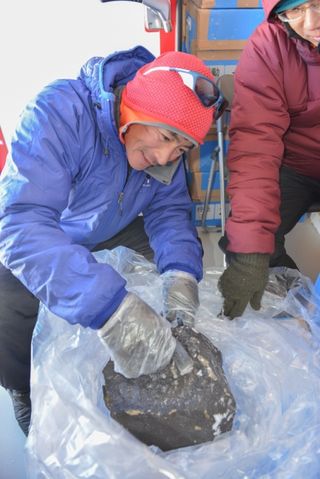
Meteorite hunters at the bottom of the world bagged a rare find this southern summer: a 40-pound (18 kilogram) chunk of extraterrestrial rock.
A team from Belgium and Japan discovered the hefty meteorite as the members drove across the East Antarctic plateau on snowmobiles. Initial tests show it is an ordinary chondrite, the most common type of meteorite found on Earth, Vinciane Debaille, a geologist from Université Libre de Bruxelles in Belgium, said in a statement.
[Full Story: Big Meteorite Discovered in Antarctica]
Discoveries down deep
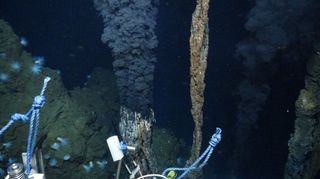
Researchers are exploring the deepest known set of hydrothermal vents in the world, at a site in the Caribbean nearly 5 kilometers (3 miles) beneath the ocean surface.
They've discovered a new vent there that is deeper than any previously known, said Andrew Thaler, a researcher on the expedition. The group explores the area using a remotely operated vehicle (ROV) named Isis, which just completed its first dive yesterday (Feb. 20), Thaler told OurAmazingPlanet.
[Full Story: Expedition Explores World's Deepest Hydrothermal Vents]
Ready for a fight
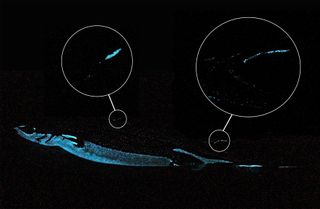
Austin Powers' Dr. Evil had one simple request: "sharks with frickin' laser beams attached to their heads."
Velvet belly lantern sharks may not satisfy that demand, but perhaps they're even better: They come ready-made with glowing spines that look like lightsabers, research shows.
[Full Story: 'Lightsaber' Spines Help Strange Shark Ward Off Predators]
Shocking arrival

The shock wave from Friday's (Feb. 15) meteor explosion above Russia sent subsonic waves through the atmosphere halfway around the world.
Up to 11 sensors in Greenland, Africa, Russia's Kamchatka Peninsula and other far-flung regions detected the Russian meteor blast's infrasound, or low-frequency sound waves. The sensors are part of the global network of 60 infrasound stations maintained by the Comprehensive Nuclear Test Ban Treaty Organization (CTBTO).
[Full Story: Russian Meteor Blast 'Heard' Around the World]
A unique song

A new species of owl has been found on an Indonesian island, identified by its unique birdsong. It had escaped scientific detection for so long partially because it looks very similar to a related species.
While on a field expedition in 2003, two members of a research team on opposite ends of the Indonesian island of Lombok independently realized that the owl's calls were unique, according to a PLOS ONE study published today (Feb. 13).
[Full Story: Unique Calls Reveal New Owl Species]
Sign up for the Live Science daily newsletter now
Get the world’s most fascinating discoveries delivered straight to your inbox.
Arctic surprise

The aftermath of Saturday's massive snowstorm was spotted from space by NASA's Terra satellite on Sunday (Feb. 10).
The snow started falling Friday when a frigid Arctic air mass from Canada collided over the Northeast with warm, moist air sweeping up from the South. Heavy snow combined with strong winds to create blizzard conditions, with more than 2 feet (0.6 meters) of snow dropped in New York, Connecticut, Massachusetts, New Hampshire, Rhode Island and Maine.
[Full Story: Snow Blankets Northeast in Satellite Image]
Still at work

A slow-moving lava flow made of glass is still inching its way down a volcano in Chile, nearly a year after it first erupted, geologists recently discovered.
The lava is made of obsidian, or volcanic glass. Researchers visiting Chile's Puyehue-Cordón Caulle volcano in January 2013 found the obsidian flow was moving, even though the volcano stopped erupting in April 2012, NASA's Earth Observatory reported.
[Full Story: Glass Lava Flow Still Oozes a Year Later]
Daddy daycare
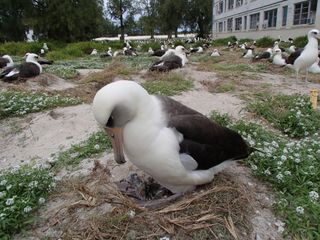
The oldest known wild bird in the United States has hatched a chick for the sixth year in a row.
The Laysan albatross named Wisdom, thought to be at least 62 years old, hatched a healthy-looking chick on Sunday (Feb. 3), according to a statement from the U.S. Department of the Interior. Wisdom and her young chick inhabit Midway Atoll National Wildlife Refuge (NWR), which is famous for its Laysan albatross population.
[Full Story: Oldest Known Wild Bird Hatches Healthy Chick]
Home cold home
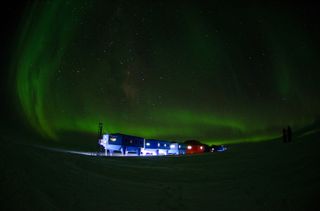
A new British research station in Antarctica is officially up and running, the British Antarctic Survey announced today (Feb. 4).
Known as the Halley VI Research Station, it is the sixth such base built by the United Kingdom and will provide a home to scientists doing research on the coldest continent, according to a BAS statement.
Most Popular



